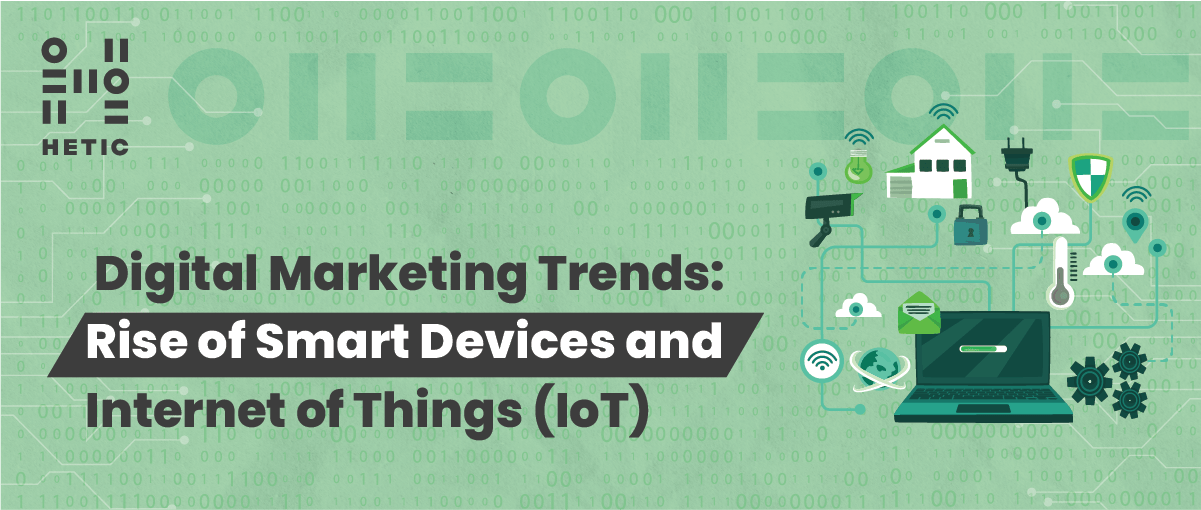How Smart Devices are Revolutionizing Consumer Electronics marks a significant turning point in how we interact with technology daily. These innovative devices have transformed our homes, workplaces, and lifestyles, making them not just convenient but essential. Over the past few years, smart devices have evolved dramatically, from basic connectivity features to advanced AI-driven functionalities, thereby reshaping consumer habits and expectations.
As we navigate this dynamic landscape, it’s important to understand the various types of smart devices available, their connectivity capabilities, and the user experience enhancements they offer. With increasing integration into our daily lives, smart devices are not only improving efficiency but also raising crucial discussions around security and privacy that consumers need to consider.
Introduction to Smart Devices: How Smart Devices Are Revolutionizing Consumer Electronics
Smart devices have become integral to the consumer electronics landscape, transforming how we interact with technology on a daily basis. These devices, equipped with internet connectivity and advanced sensors, allow users to perform tasks remotely or autonomously, enhancing convenience and efficiency. The rise of smart devices has not only changed the technological environment but has also paved the way for innovative user experiences in various domains such as home automation, health monitoring, and entertainment.In recent years, the evolution of smart devices has accelerated significantly due to advancements in artificial intelligence, machine learning, and IoT (Internet of Things) technologies.
Initially characterized by simple functionalities, smart devices now boast a comprehensive range of features that cater to the diverse needs of consumers. For example, smart speakers can play music, control other smart devices, and even provide weather updates, while smart thermostats learn user preferences to optimize energy use. This shift reflects a broader trend towards personalization and customization, allowing devices to adapt to individual habits and preferences.
Impact of Smart Devices on Daily Life and Consumer Habits
The integration of smart devices into everyday life has substantially influenced consumer behavior and lifestyle choices. The convenience offered by these technologies has led to a redefinition of traditional routines, encouraging efficiency and connectivity in day-to-day activities. For instance, here are some ways that smart devices have changed consumer habits:
- Enhanced Convenience: Tasks like grocery shopping and home security can now be managed remotely, allowing users to save time and effort.
- Increased Connectivity: Smart devices facilitate seamless communication between users and their devices, enabling real-time data sharing and control.
- Personalized Experiences: Many devices analyze user behavior to provide tailored recommendations, enhancing user satisfaction and engagement.
- Health and Wellness Monitoring: Wearable smart devices track fitness metrics and health conditions, prompting users to adopt healthier lifestyles.
As smart devices continue to permeate various aspects of daily life, their ability to streamline tasks and enhance user experiences highlights a significant shift in consumer culture. The ongoing development of these technologies suggests a future where smart solutions will become even more prevalent, further reshaping how we interact with our environments and each other.
“The integration of smart devices into everyday life signifies a pivotal change in consumer technology, underscoring the importance of connectivity and convenience.”
Types of Smart Devices
Smart devices have transformed the landscape of consumer electronics, offering convenience, efficiency, and interconnectivity. These devices are categorized into various types, each serving distinct purposes while enhancing the user experience. Understanding these categories helps consumers make informed decisions on which smart devices best fit their lifestyle and needs.Smart devices can be broadly classified into three main categories: smart home devices, wearables, and smart appliances.
Each category presents unique features and functionalities that cater to different aspects of daily life and technological comfort. Below is a closer look at these categories along with examples.
Smart Home Devices
Smart home devices are designed to enhance home automation and security. They allow users to control various aspects of their home environment remotely, often via a smartphone app or voice assistant. Popular examples include:
- Smart Speakers: Devices like Amazon Echo and Google Nest enable voice control over various smart home functions, including music playback and smart device management.
- Smart Thermostats: Products like the Nest Learning Thermostat optimize heating and cooling, learning user habits to provide energy efficiency.
- Smart Lights: Philips Hue and LIFX offer customizable lighting that can be controlled remotely, set to schedules, or integrated with other devices.
- Smart Security Cameras: Ring and Arlo provide real-time monitoring and alerts, enhancing home security.
Wearable Devices
Wearable devices have gained traction in the health and fitness sectors, providing users with real-time data about their physical activity and health metrics. Notable examples include:
- Smartwatches: Apple Watch and Samsung Galaxy Watch combine fitness tracking with smartphone notifications, making them multifaceted tools.
- Fitness Trackers: Devices like Fitbit and Garmin primarily focus on health metrics, such as heart rate and step count, encouraging a healthier lifestyle.
- Smart Glasses: Google Glass and Vuzix Blade offer augmented reality experiences, blurring the lines between real and digital environments.
Smart Appliances
Smart appliances introduce convenience and automation into everyday tasks, making home management more efficient. Examples include:
- Smart Refrigerators: Brands like Samsung offer models that can track inventory, suggest recipes, and even allow remote temperature control.
- Smart Ovens: Devices like the June Oven can be controlled via an app and provide cooking assistance through integrated sensors.
- Smart Washers and Dryers: LG and Whirlpool offer models that can be programmed and monitored remotely for laundry convenience.
| Device Type | Key Features | Examples |
|---|---|---|
| Smart Home Devices | Remote control, automation, security | Amazon Echo, Nest Thermostat, Philips Hue |
| Wearable Devices | Health tracking, notifications, fitness monitoring | Apple Watch, Fitbit, Google Glass |
| Smart Appliances | Automation, connectivity, energy efficiency | Samsung Smart Refrigerator, June Oven, LG Washer |
The diversity of smart devices available in the market caters to a wide range of consumer preferences, enhancing both comfort and efficiency. These devices not only represent advancements in technology but also signify a shift toward a more connected lifestyle.
Connectivity and Interoperability
Smart devices are designed to enhance convenience and efficiency in our daily lives, largely through their ability to connect to the internet and communicate with each other. This connectivity allows for the seamless exchange of data and commands, making smart homes and connected environments possible. Understanding how these devices connect and the importance of interoperability is essential for maximizing their potential.Smart devices connect to the internet primarily through Wi-Fi, Bluetooth, Zigbee, Z-Wave, and cellular networks.
Each of these technologies serves different purposes, allowing devices to communicate based on range, bandwidth, and energy efficiency requirements. Wi-Fi, for instance, is commonly used for devices that require high data rates, such as smart TVs and security cameras. Conversely, technologies like Zigbee and Z-Wave are tailored for low-power devices, making them ideal for sensors and smart light bulbs that operate on battery power.
Importance of Interoperability
Interoperability among smart devices is crucial for creating a unified and user-friendly experience. When devices can work together seamlessly, users can manage various functionalities from a single platform, which enhances convenience and efficiency. Without interoperability, users might face compatibility issues, requiring multiple apps or control systems to manage their devices.Several protocols and standards facilitate connectivity and ensure that devices from different manufacturers can communicate effectively.
The following are key examples:
- Wi-Fi: A widespread protocol that allows devices to connect to the internet and each other, enabling functionalities such as streaming and remote control.
- Bluetooth: A short-range communication protocol ideal for personal devices, such as wearables and smart speakers, allowing for easy pairing and data exchange.
- Zigbee: A low-power, wireless mesh network standard designed for smart home devices, allowing for efficient communication over longer distances compared to Bluetooth.
- Z-Wave: Similar to Zigbee but optimized for home automation, Z-Wave operates at a lower frequency, providing better penetration through walls and other obstacles.
- Thread: A newer protocol designed for low-power devices, focusing on secure, reliable connections and interoperability among smart home products.
“Interoperability is not just a technical requirement; it’s essential for user satisfaction and the broader adoption of smart technologies.”
The combination of these protocols enables a vast ecosystem of connected devices, ensuring that users can enjoy a cohesive smart environment tailored to their needs. By leveraging these technologies, consumers can create a more integrated lifestyle, where devices respond to each other intuitively and efficiently.
User Experience Enhancements
Smart devices are transforming the way consumers interact with technology, leading to significant improvements in user experience through various enhancements. With the ability to personalize settings and features, integrate artificial intelligence for improved functionality, and gather user feedback for continuous improvement, smart devices make everyday tasks more intuitive and enjoyable.
Personalization Through Smart Devices
Smart devices enable a high degree of personalization, tailoring experiences to individual user preferences and behaviors. By analyzing data from user interactions, these devices can adjust settings, recommend content, and enhance usability to create a seamless experience. Personalization is not just a luxury; it can significantly improve efficiency and satisfaction. For example, smart thermostats learn your heating preferences over time and adjust their settings accordingly, ensuring optimal comfort while saving energy.
Role of Artificial Intelligence in Device Functionality
Artificial intelligence (AI) plays a crucial role in augmenting the capabilities of smart devices. By utilizing machine learning algorithms, these devices can process vast amounts of data to learn user habits and predict future needs. AI enhances device functionality by automating mundane tasks, aiding decision-making, and providing intelligent responses to user commands. For instance, virtual assistants like Amazon Alexa and Google Assistant use AI to understand context and respond naturally, making interactions feel more human-like and fluid.
This not only improves user satisfaction but also encourages more frequent and effective use of smart devices.
User Feedback Gathering Methods
Gathering user feedback is essential for continuously refining and enhancing smart device features. Various methods can be employed to ensure that users’ needs and preferences are met. These methods include:
-
Surveys and Questionnaires:
Directly asking users about their experiences can yield valuable insights.
-
Usage Analytics:
Tracking how users interact with devices provides data on popular features and pain points.
-
Beta Testing Programs:
Inviting select users to test new features allows for real-world feedback before widespread release.
-
Social Media Monitoring:
Observing user discussions on platforms can highlight trends and emerging issues.
By implementing these feedback mechanisms, manufacturers can adapt their products to better serve the evolving needs of consumers, ensuring that smart devices remain relevant and user-friendly.
Security and Privacy Concerns
The rise of smart devices has introduced not only convenience but also significant security and privacy concerns. As these devices collect and transmit personal data, they become targets for cybercriminals. Understanding the common security risks associated with smart devices is essential for consumers to protect their sensitive information and maintain control over their digital environments.Smart devices often operate on interconnected networks, making them vulnerable to a variety of security threats.
Common risks include unauthorized access to personal data, hacking of devices leading to physical security breaches, and malware attacks. As smart home setups grow in complexity, the potential for vulnerabilities increases. Consumers must be proactive in safeguarding their networks and devices to mitigate these risks.
Common Security Risks
Several security threats are prevalent in the realm of smart devices. Identifying these risks is crucial for consumers aiming to protect their homes and personal information.
- Unauthorized Access: Many devices lack robust authentication measures, allowing hackers to gain control.
- Data Interception: Data transmitted between devices can be intercepted, compromising sensitive information.
- Weak Passwords: Default passwords are often not changed, making devices easy targets.
- Outdated Software: Devices that do not receive regular updates may have unpatched vulnerabilities.
- Insecure Networks: Connecting devices to unsecured networks can expose them to external threats.
Best Practices for Securing Smart Home Networks
Securing a smart home network is paramount to prevent unauthorized access and protect personal data. Implementing these best practices can greatly enhance security.
- Change Default Passwords: Always replace factory-set passwords with strong, unique ones.
- Enable Two-Factor Authentication: Where available, use two-factor authentication for an additional layer of security.
- Keep Software Updated: Regularly update device firmware to patch known vulnerabilities.
- Use a Secure Network: Ensure your Wi-Fi network is secured with strong encryption (WPA3, if available).
- Isolate Smart Devices: Create a separate network for smart devices to limit exposure to other devices.
Privacy Considerations for Consumers
When integrating smart devices into daily life, consumers should be aware of various privacy considerations. Understanding these factors can help users make informed choices and safeguard their data.Protecting your privacy while using smart devices involves several important considerations:
- Data Collection: Be aware of what data is being collected and how it is used by the device manufacturers.
- Data Sharing Policies: Review the privacy policies to understand if your information is shared with third parties.
- Device Permissions: Regularly check and restrict permissions granted to apps associated with smart devices.
- Voice Activation Features: Consider the implications of using devices that constantly listen for voice commands.
- Location Tracking: Disable location tracking features unless necessary for device functionality.
Future Trends in Smart Devices
As smart devices continue to evolve, they are set to redefine the landscape of consumer electronics in remarkable ways. The integration of advanced technologies will not only enhance user experience but also transform how we interact with our surroundings. The future of smart devices promises to be interconnected, more intelligent, and deeply responsive to user needs, driven by emerging innovations and changing consumer expectations.Emerging technologies like 5G and edge computing are poised to significantly impact the capabilities of smart devices.
The introduction of 5G networks will facilitate faster data transmission, reduced latency, and improved connectivity for devices. Meanwhile, edge computing allows data processing closer to the source, which enhances performance and minimizes delays. Together, these technologies will enable smart devices to operate seamlessly, providing real-time data analytics and automated responses that were previously unattainable.
Predicted Advancements in Smart Device Technology
The landscape of smart devices is expected to undergo transformative changes, driven by advancements in various fields. Key predictions for the future include:
- Enhanced AI Integration: Artificial intelligence will become more deeply embedded in smart devices, allowing for predictive analytics, personalization, and improved decision-making capabilities.
- Increased Interconnectivity: The Internet of Things (IoT) will expand, leading to more devices communicating with each other, creating a cohesive ecosystem that enhances daily life.
- Smart Home Automation: Devices will evolve to automate household tasks more efficiently, with user-friendly interfaces enabling intuitive interactions, such as voice commands and gesture controls.
- Health Monitoring Devices: Wearable technology will advance, providing more precise health tracking and real-time data sharing with healthcare providers for better management of chronic conditions.
- Sustainable Technologies: The focus on sustainability will drive the development of energy-efficient devices and smart systems that optimize environmental impact, such as smart grids and renewable energy integrations.
The future of smart devices will be characterized by a seamless integration of AI, IoT, and user-centric designs, fundamentally changing how consumers engage with technology.
User expectations for smart devices are evolving rapidly. Consumers are becoming increasingly aware of the potential of technology to not only simplify tasks but also enhance quality of life. This shift in perspective is prompting manufacturers to prioritize:
- User-Centric Design: Devices are expected to be intuitive and easily navigable, providing a seamless experience that caters to diverse user demographics.
- Enhanced Security Features: With rising concerns regarding privacy, users demand more robust security measures and transparent data management practices.
- Customization Options: Consumers are looking for smart devices that allow for personalization, adapting functionality based on individual preferences and lifestyle choices.
- Affordability and Accessibility: As technology advances, there is a growing expectation for smart devices to become more affordable and accessible to a wider audience, bridging the digital divide.
The combination of these trends indicates a future where smart devices not only augment human capabilities but also foster a more connected, efficient, and sustainable world. As market demands evolve, manufacturers will need to adapt swiftly to meet and exceed user expectations, ensuring that the next generation of smart devices is both innovative and practical.
Case Studies of Smart Device Implementation
The integration of smart devices into homes and businesses has led to remarkable advancements in efficiency, convenience, and overall quality of life. By examining real-world applications, we can glean valuable insights into how these technologies have been successfully implemented and the lessons learned along the way. This section will explore various case studies that highlight successful smart device deployments in different contexts.Successful implementations showcase the impact of smart technology on both residential and commercial settings.
These implementations often reveal not only the benefits of adopting smart devices but also the challenges faced by early adopters. The following table summarizes key outcomes from various case studies, illustrating effective strategies and common pitfalls encountered in the journey toward a smart-enabled environment.
Residential Case Study: Smart Home Integration
One notable case is the installation of smart home technology in a suburban household. The family implemented devices like smart thermostats, lighting systems, and security cameras, resulting in enhanced energy efficiency and security.
| Device | Outcome | Lessons Learned |
|---|---|---|
| Smart Thermostat | Reduced energy bills by 30% within the first year | Importance of user education on settings |
| Smart Lighting | Increased convenience and customization of lighting | Need for seamless integration with existing systems |
| Security Cameras | Enhanced home security and peace of mind | Regular updates necessary for optimal performance |
The family’s experience highlights how thoughtful selection and integration of smart devices led to significant improvements in their daily lives while pointing out the necessity for user education and system compatibility.
Commercial Case Study: Smart Office Environment
In a commercial setting, a medium-sized company adopted smart devices for their office space, including automated climate control, smart lighting, and advanced meeting room technology. This shift was aimed at increasing employee productivity and reducing operational costs.
| Device | Outcome | Lessons Learned |
|---|---|---|
| Automated Climate Control | Reduced energy consumption by 25% | Need for employee feedback on comfort levels |
| Smart Lighting | Improved employee focus and satisfaction | Training required for optimal use of features |
| Meeting Room Tech | Streamlined meeting processes, leading to 15% more efficient meetings | Technical support essential during initial rollout |
This case illustrates how integrating smart technology can lead to substantial financial benefits and improved workplace dynamics, highlighting the importance of involving employees in the transition process.
“Smart devices are not just tools; they redefine the environment in which we live and work, optimizing our experiences and enhancing our capabilities.”
The experiences from these case studies offer a roadmap for others considering the adoption of smart technology, emphasizing the importance of strategic planning, user education, and ongoing support.
Environmental Impact of Smart Devices

The environmental impact of smart devices is a crucial topic as their popularity continues to grow. These devices are not just about convenience and enhanced user experience; they also play a significant role in promoting sustainability and eco-friendly practices. Understanding the energy efficiency of smart devices and their potential for reducing environmental footprints is vital for consumers and manufacturers alike.Smart devices are designed to be energy-efficient, utilizing advanced technologies that minimize energy consumption while maximizing functionality.
This efficiency is essential in a world seeking to reduce greenhouse gas emissions and combat climate change. Notably, smart home technology can optimize energy use by controlling heating, cooling, and lighting based on real-time data and user habits. This results in significant energy savings compared to traditional systems.
Role in Promoting Eco-Friendly Practices, How Smart Devices are Revolutionizing Consumer Electronics
Smart devices contribute to environmentally friendly practices in various ways, helping both consumers and businesses reduce their overall environmental impact. Many of these devices can aid in monitoring and managing energy usage effectively, contributing to lower carbon footprints. The integration of IoT (Internet of Things) technologies allows for better resource management and conservation.Examples of eco-friendly practices promoted by smart devices include:
- Smart Thermostats: Devices like the Nest Learning Thermostat learn user patterns to optimize heating and cooling, leading to energy savings of up to 15% annually.
- Smart Lighting: Systems such as Philips Hue allow users to control lighting remotely, set schedules, and utilize energy-efficient LED bulbs, reducing electricity usage significantly.
- Energy Monitoring Systems: Tools like Sense track energy consumption in real time, enabling users to identify and reduce energy waste by changing habits or upgrading appliances.
- Smart Irrigation Systems: Devices like Rachio adjust watering schedules based on weather forecasts and soil moisture levels, resulting in water conservation and reduced environmental impact.
Companies Leading in Sustainable Smart Device Design
Several companies are at the forefront of integrating sustainability into their smart device offerings. These companies are committed to reducing their environmental impact through innovative designs, responsible sourcing of materials, and energy-efficient production processes.Prominent examples include:
- Apple: Committed to carbon neutrality across its entire supply chain by 2030, Apple focuses on using recycled materials and creating energy-efficient devices.
- Google: Google Nest products are designed with sustainability in mind, utilizing recyclable materials and energy-efficient technologies to minimize environmental impact.
- Ecobee: Known for its smart thermostats, Ecobee emphasizes energy savings and smart home integration to promote eco-friendly living.
- Philips: Philips invests heavily in sustainable lighting solutions, with a focus on energy efficiency and reducing waste through recycling programs.
Smart devices are not only reshaping the landscape of consumer electronics but are also paving the way for a more sustainable future. Their ability to enhance energy efficiency and promote eco-friendly practices makes them valuable tools in the fight against climate change.



